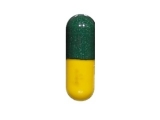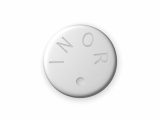Amoxicillin and clavulanate
Amoxicillin and clavulanate is a combination antibiotic used to treat bacterial infections in various parts of the body. The medication works by preventing the growth and spread of bacteria.
Amoxicillin is a type of penicillin antibiotic, while clavulanate is a beta-lactamase inhibitor that helps prevent certain bacteria from becoming resistant to amoxicillin. The combination of these two drugs makes amoxicillin and clavulanate more effective in treating bacterial infections than amoxicillin alone.
The medication is often prescribed to treat infections of the ears, nose, throat, respiratory tract, urinary tract, and skin. It can also be used to treat dental infections, such as abscesses, and to prevent infections in people with weakened immune systems.
While amoxicillin and clavulanate is generally safe and effective, it can cause side effects, such as diarrhea, nausea, vomiting, and rash. It may also increase the risk of developing yeast infections and, in rare cases, can cause an allergic reaction.
If you are prescribed amoxicillin and clavulanate, it is important to follow your doctor's instructions carefully and to let them know if you experience any unusual symptoms or side effects. You should also inform your doctor if you are allergic to any medications or have any medical conditions, as this can affect your ability to take amoxicillin and clavulanate safely.
Overview of Amoxicillin and Clavulanate
What is Amoxicillin and Clavulanate?
Amoxicillin and clavulanate is a combination medicine used to treat various bacterial infections. The medicine contains two active ingredients: amoxicillin, which belongs to the group of penicillin antibiotics, and clavulanate, which belongs to a group of medicines called beta-lactamase inhibitors.
What are the uses of Amoxicillin and Clavulanate?
Amoxicillin and clavulanate is used to treat a wide range of bacterial infections, including respiratory infections, skin infections, urinary tract infections, and ear infections. The medicine is also used to treat certain types of dental infections, such as abscesses.
What are the side effects of Amoxicillin and Clavulanate?
Common side effects of amoxicillin and clavulanate include diarrhea, nausea, vomiting, and skin rash. In rare cases, the medicine can cause severe allergic reactions that can be life-threatening.
What precautions should be taken while using Amoxicillin and Clavulanate?
- Avoid using amoxicillin and clavulanate if you are allergic to any of the ingredients.
- Inform your doctor if you have a history of liver disease, kidney disease, or any other medical conditions before using the medicine.
- Always take the medicine as prescribed by your doctor. Do not stop the medication even if you feel better.
- Do not share the medicine with anyone, even if they have the same symptoms as you.
Conclusion
Amoxicillin and clavulanate is a widely used combination medicine for the treatment of bacterial infections. Like all medicines, it can cause side effects and requires certain precautions to be taken. Hence, it is important to consult with your doctor before using the medicine.
Uses of Amoxicillin and Clavulanate
Bacterial Infections
One of the primary uses of amoxicillin and clavulanate is for the treatment of bacterial infections. This combination antibiotic is effective against a wide range of bacteria, including those that cause respiratory, skin, ear, and urinary tract infections. It works by inhibiting the growth and replication of bacteria, ultimately killing them off.
- Respiratory infections: Amoxicillin and clavulanate can be used to treat sinusitis, bronchitis, and pneumonia.
- Skin infections: This drug is commonly used to treat cellulitis, impetigo, and folliculitis.
- Ear infections: Amoxicillin and clavulanate are often used to treat acute otitis media, a common ear infection in children.
- Urinary tract infections: This combination antibiotic can be used to treat both lower and upper urinary tract infections.
Dental Infections
Amoxicillin and clavulanate can also be used to treat dental infections, including abscesses and periodontitis.
Bite Wounds
Animal bites or human bites can lead to serious infections. Amoxicillin and clavulanate may be prescribed to prevent or treat infections caused by these types of wounds.
Gynecological Infections
Amoxicillin and clavulanate can also be used to treat gynecological infections, such as bacterial vaginosis and pelvic inflammatory disease.
Prevention of Endocarditis
Patients undergoing certain dental or surgical procedures may be at risk for endocarditis, an infection of the lining of the heart. Amoxicillin and clavulanate may be prescribed as a prophylactic measure to prevent this type of infection.
Side Effects of Amoxicillin and Clavulanate
Common Side Effects:
The use of Amoxicillin and Clavulanate can cause common side effects, such as nausea, vomiting, diarrhea, and stomach pain. These side effects are usually mild in nature and go away on their own after a few days. It is important to stay hydrated and maintain a healthy diet while taking this medication to avoid these side effects.
Allergic Reactions:
In rare cases, Amoxicillin and Clavulanate can cause allergic reactions, which can be severe and life-threatening. Symptoms of an allergic reaction include rash, itching, hives, swelling of the face, lips, or tongue, and difficulty breathing. If you experience any of these symptoms, seek medical attention immediately.
Gastrointestinal Disorders:
Amoxicillin and Clavulanate can also cause gastrointestinal disorders, such as colitis, which is an inflammation of the colon. Symptoms include bloody or watery stools, abdominal pain, and fever. If you experience any of these symptoms, stop taking the medication and contact your doctor immediately.
Hepatic Disorders:
Amoxicillin and Clavulanate can also lead to hepatic disorders, such as hepatitis or liver failure, especially in patients with pre-existing liver conditions. Symptoms to watch out for include yellowing of the skin or eyes, dark urine, and unexplained fatigue. If you experience any of these symptoms, seek medical attention immediately.
Other Side Effects:
Other side effects of Amoxicillin and Clavulanate include headaches, dizziness, and insomnia. These side effects are usually mild in nature and go away on their own after a few days. However, if you experience any of these symptoms, it is important to talk to your doctor to make sure they are not affecting your daily life.
- Disclaimer: This article is for informational purposes only and should not be used as a substitute for professional medical advice. Always consult your doctor before taking any medication.
Precautions When Taking Amoxicillin and Clavulanate
Inform Your Doctor About Allergic Reactions
It is important to inform your doctor if you have any allergies to medications, especially penicillin or cephalosporin antibiotics. Amoxicillin and clavulanate may cause an allergic reaction, and it is important to avoid taking it if you have had an allergic reaction to similar medications in the past.
Take the Medication as Prescribed
It is important to take amoxicillin and clavulanate exactly as prescribed by your doctor. Do not stop taking the medication early, even if you start feeling better. This can lead to the bacteria becoming resistant to the medication and the infection may return.
Follow All Diet and Exercise Recommendations
Your doctor may recommend certain dietary and exercise changes while taking amoxicillin and clavulanate. These recommendations may include avoiding certain foods or increasing your water intake. It is important to follow these recommendations to ensure the medication is effective and to prevent any potential side effects.
Avoid Alcohol and Tobacco
While taking amoxicillin and clavulanate, it is important to avoid drinking alcohol and using tobacco products. These substances may decrease the effectiveness of the medication and may increase the risk of side effects.
Inform Your Doctor About Other Medications
It is important to inform your doctor about any other medications or supplements you are taking while on amoxicillin and clavulanate. Some medications may interact with this antibiotic and cause negative side effects. Additionally, herbal supplements may also interact and should be discussed with your doctor.
Watch for Side Effects
If you experience any side effects while taking amoxicillin and clavulanate, such as diarrhea, nausea, or rash, inform your doctor immediately. It is important to monitor for these side effects to prevent any potential complications.
Interactions with Other Drugs
Probenecid
Probenecid, a medication used to treat gout, may interact with amoxicillin and clavulanate, causing potential side effects such as increased concentrations of amoxicillin and prolonged elimination half-life of clavulanic acid in the body. It is advised to adjust the dosage of amoxicillin and clavulanate when used together with probenecid.
Methotrexate
Concomitant use of methotrexate and amoxicillin and clavulanate may increase the likelihood of toxic effects of methotrexate, such as increased risk of liver damage or bone marrow suppression. It is important to monitor the patient's laboratory values closely when these medications are used together.
Allopurinol
The use of allopurinol, a medication used to treat gout, with amoxicillin and clavulanate may cause an increased risk of skin rash. It is recommended to avoid using these medications together unless the potential benefits outweigh the risks.
Oral Contraceptives
The effectiveness of oral contraceptives may be decreased when used concomitantly with amoxicillin and clavulanate. Patients should use an alternative form of contraception, such as condoms, while taking these medications together.
Warfarin
The combination of warfarin and amoxicillin and clavulanate may increase the risk of bleeding. It is essential to monitor the patient's INR frequently and adjust warfarin dosage as necessary.
Table of Interactions
| Drug Name | Effect on Amoxicillin/Clavulanate | Effect on Other Drug |
|---|---|---|
| Probenecid | Increased amoxicillin concentrations and prolonged clavulanic acid elimination half-life in the body | May require adjustment of probenecid dosage |
| Methotrexate | Increased likelihood of toxic effects of methotrexate | May require monitoring of laboratory values |
| Allopurinol | Increased risk of skin rash | Avoid use unless potential benefits outweigh risks |
| Oral Contraceptives | Decreased effectiveness of oral contraceptives | Use alternative form of contraception |
| Warfarin | Increased risk of bleeding | Monitor INR frequently and adjust warfarin dosage as necessary |
Follow us on Twitter @Pharmaceuticals #Pharmacy
Subscribe on YouTube @PharmaceuticalsYouTube





Be the first to comment on "Amoxicillin and clavulanate"